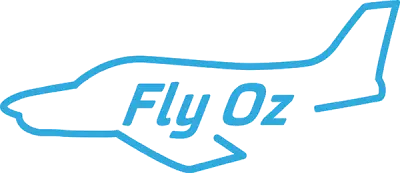For licensed pilots, having an instrument rating is important as part of their specialised skillset in flying an aircraft. An instrument-rated pilot means they can legally fly through clouds, fog, under rainy weather, or at night, based on their interpretation and assessment of the readings on the aircraft’s instruments. This helps them to make informed decisions on what course of action to take and expands their skills to fly beyond good weather conditions only. A pilot who’s untrained in instrument flying can compromise the safety of the passengers and the aircraft.
To be an instrument-rated pilot means you have advanced flying skills. It is imperative that you follow procedures and apply skills while maintaining a sharp focus on details. Having an instrument rating gives you the knowledge, skill and training to become a safer pilot. Here’s how you can obtain yours, in compliance with the Australian government’s Civil Aviation Safety Authority (CASA).
Requirements to Get an Instrument Rating
An instrument-rated pilot should be able to fly and navigate the aircraft under the instrument flight rules (IFR) and visual flight rules (VFR). An IFR flight means that you’re flying in reference to the readings on the aircraft’s instruments. The IFR also includes Instrument Approach Procedures (IAP) that should be followed during the approach and landing of the aircraft
Those who are eligible for instrument rating must have the following requirements:
- Possess at least a private pilot licence (PPL)
- Study instrument flight rating courses and learn about aeronautical knowledge and ground theory
- Take and pass the instrument rating exam
- Flight training with an authorised flight instructor to obtain aircraft instrument and 3D (or at least 2D) IAP endorsements
Here are just some examples of the skills you’ll learn to develop when you’re training for instrument rating:
- Understanding the functions of aircraft instruments
- Correctly read and interpret the indicators in the instruments
- Communicating clearly and correctly with Air Traffic Control and other aircraft
- Know how to fly an approach or arrival
- Read IFR charts and learn about Lowest Safe Altitudes (LSALT)
- Learn how to fly a holding pattern
Single-Engine and Multi-Engine Instrument Rating
You also need to consider what type of aircraft you’ll be using when you get your instrument rating. If you’re applying for a single-engine instrument rating, this will allow you to fly a single-engine aircraft cross country in accordance with Instrument Flight Rules.
A multi-engine instrument rating is required for pilots who are licensed to fly aircraft with more than one engine in instrument weather conditions and at night. Having this kind of rating is necessary for professional pilots who want to seek employment opportunities in commercial aviation by flying multi-engine aeroplanes in airlines or charter operations.
Instrument endorsements
You can expand your skills in flying different kinds of aircraft, whether single- or multiple-engine, by applying for different instrument endorsements.
As mentioned earlier, having a 3D or at least a 2D IAP endorsement is also among the requirements to get an industry rating. With a 2D IAP endorsement, you are legally allowed to do a 2D instrument approach using instrument displays with lateral or directional navigation, manage the aircraft’s vertical path as per IAP compliance and must not go below the minimum descent altitude/height (MDA/H) unless you can maintain visual reference.
For 3D IAP endorsement, you are authorised to operate a 3D instrument approach by referring to instrument displays that will guide you on lateral and vertical navigation.
This also means that the pilot should know how to do a missed approach at certain DA/H levels if the required visual cues are insufficient.
Industry-Leading Flight Training School in Australia
At Fly Oz in Cowra, NSW, we offer aircraft flight training lessons to help you develop your skills that will prepare you for a rewarding career in aviation. We are a CASA-certified flight training school and a Registered Training Organisation under the Australian Skills Quality Authority (ASQA).
Our instrument flight rating course will provide you with a solid educational background and actual aircraft flight training, whether for single-engine or multiple-engine instrument rating and endorsements and for private instrument flight rules (PIFR). At the end of the course, you’ll receive the AVI50519 Diploma of Aviation that certifies your instrument rating capabilities to fulfil professional requirements.
The instrument rating course consists of eight weeks training which including classroom and aircraft-based training, with 27.5 hours per week of face-to-face learning delivery. It is comprised of 14 units of competency (13 core units and 1 elective unit), following required industry standards. Total cost of course fees would be approximately $27,500.
For more information about our instrument flight rating course, download our free course guide here. Let’s take your career to the skies! You can contact Fly Oz on 02 6342 1812, email your enquiries at [email protected], or fill up our contact form and we’ll get in touch with you right away.
